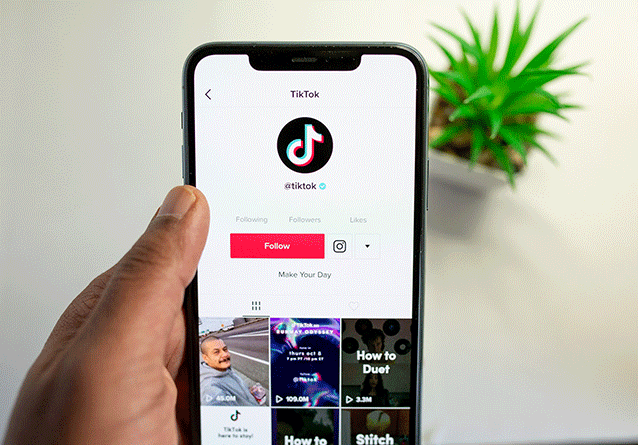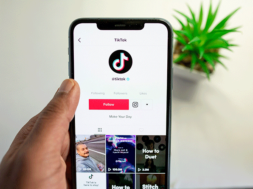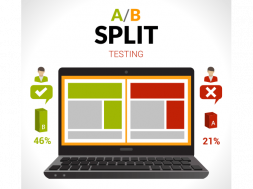
By Ernie Decoite, VP of Digital Marketing, Becker Media
What is TikTok
You’ve likely heard of TikTok by now. The short-video sharing app has been something of a sensation with young audiences in recent years across the globe, including the United States. Originally launched in 2016 in China, it later debuted internationally in 2017. By 2018, its popularity was growing in the U.S, with teens and young adults, as celebrities and pop culture started to weave heavily into TikTok’s ecosystem.
There are now over 130 million downloads in the U.S. and over 100 million active users on TikTok in the country.
At the time this article is being written, TikTok sits as the second most popular app in the Apple App Store.
The audience on TikTok skews to the young side, but maybe not as much as you might think. Roughly two-thirds of TikTok users are over the age of 19 according to Comscore, and that number has been growing. Users are hooked, too. According to recent data, users spent an average of 52 minutes per day on the app, which is only narrowly behind Facebook’s average of 58.5 minutes per day.
Will TikTok be a fad, or is it here to stay? While that question remains to be answered, the fact is that TikTok is here now, and it can’t be ignored.
So, while you have probably heard about TikTok, you might not understand what it actually is, or what the fuss is about. The reality is, TikTok is a fairly simple social media application at its core. The platform uses and can be used to make short-form videos that are easily shared amongst users. Videos are typically anywhere from 15 to 60 seconds in length, although longer-form videos are in beta for some users. TikTok easily allows users to add music to their videos, and music has become a huge part of the culture on TikTok.
Content of the videos you can find on the app runs the gamut from dance routines to comedic sketches to how-to educational videos, and pretty much anything else you can think of. When a new user signs up, they simply choose the type of video/content they are interested in, and TikTok does the rest; serving up a continuous stream of videos, one after another, with ads intermittently served between.
The secret sauce: TikTok’s user algorithm
While this may still sound pretty simple, it is truly the effectiveness of TikTok’s user algorithm that has likely contributed to the surge in popularity. Users on TikTok get a very different experience than on platforms like Facebook and Instagram, for example.
While many social media platforms are focused on community and shared experiences amongst friends, TikTok does an exceptional job of creating a unique experience for each user that is very tailored to their interests.
TikTok really knows its user, and has a way of serving them extremely relatable content in a continuous stream, driving up usage time on the app.
Advertising on the TikTok platform
On the advertising front, TikTok originally kept ads off the platform on the initial launch. Over time, there were tests for white-listed brands to begin experimenting with advertising on the app. By mid-2020, TikTok opened a self-serve advertising platform available to all businesses that strongly resembles the advertising platform found in Facebook ads. While the platform debuted with limited capabilities, it has since grown more sophisticated over the past nine months.
There are a lot of similarities to Facebook Ads, and then some subtle differences as well which usually boil down to TikTok just not being as robust or granular in their offerings. To start, just like Facebook Ads, TikTok Ads offers three main ways to target an audience – demographics, interest categories and lookalike audiences.
On the demographics front, you can target four simple levels: age, gender, location, and language. All of these options are available on Facebook as well, but TikTok is a little more limited in how much control they give you in the areas of geography and age. At this time, you can only focus on DMA (designated market area) level targeting for locations. This definitely limits advertisers that wish to target a small radius or only specific zip codes.
For example, if you wanted to target just Long Island, New York, you would have to also include all of Manhattan, and even suburbs further east, north, and south within the same campaign. Facebook allows advertisers to target by a desired radius on a point of a map, as well as at the zip code level, which allows advertisers to get highly specific in targeting users in an effort to maximize efficiency.
As for age targeting, TikTok only allows the advertisers to select from their own pre-defined age groups. Those are 13-17, 18-24, 25-34, 35-44, 45-54, and 55+. Meanwhile, Facebook allows its advertisers to select any age range down to the specific years they would like to target.
Interests work similarly on both platforms, but again, Facebook has more robust options than TikTok for now. Interests are categories of behaviors, hobbies, and other similar traits that TikTok has grouped their users into based on their activity in the app and on the web. Examples include cars, video games, pets, comedy, shopping for certain apparel and accessories, and much more. While there is some good general variety to the options provided, it pales in comparison to the level of detail that Facebook interest targeting goes, which can get into very specific niche interests, occupations, and more.
Lastly, lookalike audiences, which tend to be the most effective targeting method for driving enrollments on Facebook, are available on TikTok as well.
The process for building the audience is conceptually the same as Facebook, the advertiser starts with a seed list (list of their customers or highly relevant users) and uploads that list directly into the advertising platform. From there, people in the list are found in the TikTok user based, matched by things like email address and phone number. Finally, the algorithm takes over to create an audience of “lookalikes” that behave most similarly to the uploaded list and targets ads directly to those new users.
The TikTok principle is simple but compelling: ‘Inspire Creativity and Bring Joy’ is its mantra, which it does through its interface, with all the features users expect to see – such as liking, commenting, swiping, and hashtags. TikTok is a diverse community that strives to connect younger audiences from all walks of life. It is also an effective way for brands or schools to embrace the authentic spirit of the platform in order to align with the inclusive attitudes of today’s consumers.
Messaging and creative that makes sense on TikTok
Maybe the biggest difference between ads found on TikTok and other digital media platforms is the topic of creative. Creative needs to be original, genuine, vibrant, and always with sound-on. The bottom line is – make sure your creatives are fun – even in the education space. Remember that TikTok is an entertainment platform that puts the user in control, so if ads are boring and stale, people will keep right moving. Right now, some of the best practices on TikTok creative are as follows:
- Short content: 15-60 seconds max
- According to TikiDragons.com, it is proven that 63% of videos with the highest CTR highlight the key message or product within the first 3 seconds.
- Create with vertical video in mind
- Sound-on video
- Vibrant, high impact visuals
- Simple, informative captions
- Strong call to action
- Color contrast visuals
If your creative resources are limited, platforms like Canva and Promo are inexpensive and easy-to-use tools that you can use to start making really professional TikTok ads in no time.
The ultimate goal of the creative should be to make a connection – not an ad.
Why TikTok is a great fit for education advertisers
New audiences: One of the things that is so exciting about TikTok is that it helps schools reach an entirely new and massive group of prospective students that they’re not currently reaching on other platforms. It’s not every day that a platform with such a huge concentration of highly engaged users who demographically fit right in the education market’s sweet spot comes along. Ultimately this leads to greater efficiency across all advertising channels by providing another option to allocate spend away from less efficient pockets of existing channels, while helping to fuel brand awareness and demand, providing a lift to channels like organic and paid search.
The ad platform is familiar: Because the ad platform user interface is so similar to other ad platforms, the learning curve is relatively short for those who already have experience with the already established ad platform UIs. The overall account and campaign structure is very similar to the Facebook Ads platform as are targeting and optimization options. There are a few differences, but in general, TikTok has kept the platform simple and intuitive, which makes getting started a lot easier.
Less competition: TikTok ads, as a new ad platform, has far fewer advertisers than other more well-established platforms.
That means that, at present, there’s less competition and the CPMs, and ultimately all other metrics that follow from that are still relatively inexpensive.
While we have no doubt that TikTok will catch the attention of the industry in the months and years ahead, it’s a great time to jump in as an early adopter while the competition is low, and the ad space is “on sale.”
Results: Perhaps the most exciting aspect of the TikTok ads platform is that it actually drives meaningful results. Schools that have adopted TikTok ads for lead generation are seeing the platform driving directly attributable leads and enrollments at costs similar to non-branded paid search, Facebook Ads, and Google Discovery. This is a big deal. There are many options for schools to drive awareness under the premise of lifting other channels, but extremely rare that a new platform comes along that can drive attributable leads and enrollments at scale.
It’s fun: TikTok is so popular because the app’s primary goal is entertaining its users. One of the most critical elements and most challenging aspects of being successful on the platform is developing creatives that entertain your audience while still delivering a compelling and concise message about your school and your programs. We advertisers in education are typically very conservative with our ad content. That’s not going to work on TikTok though. TikTok is an opportunity to overlay our ads with loud music, show bold imagery, and even incorporate a bit of humor. TikTok offers a chance to really let our creativity loose (while staying within compliance of course).
References:
- TikTok Statistics – Updated February 2021 https://wallaroomedia.com/blog/social-media/tiktok-statistics/
- New Data Reveals Users Spend More Time on TikTok Than Instagram
https://www.digitalinformationworld.com/2020/07/where-consumers-spend-more-time-on-social-media-tiktok-instagram-or-facebook.html - Average Time Spent on TikTok Daily – https://www.oberlo.com/blog/tiktok-statistics
- Creative Stats Support – https://medium.com/tikdragons/the-7-best-practices-to-create-tiktok-ads-864c631c29df
- Creativity on Tik Tok – https://www.creativereview.co.uk/creative-advertising-tiktok/
ERNIE DECOITE is a digital performance marketing expert with extensive experience in virtually all areas of digital marketing and advertising. Ernie is an industry veteran whose experience dates back to the early days of digital advertising. In 2017 he joined Becker to help lead its growing digital team. He’s a hands-on leader who is directly involved in the day-to-day management of all of Becker’s digital marketing initiatives, helping to drive performance and innovation. Ernie lives in Pleasanton, CA with his wife and two children.
Contact Information: Ernie Decoite // Vice President, Digital Marketing // Becker Media // 510-465-6200 // edecoite@beckermedia.net // www.beckermedia.net // https://www.facebook.com/BeckerSocial/











